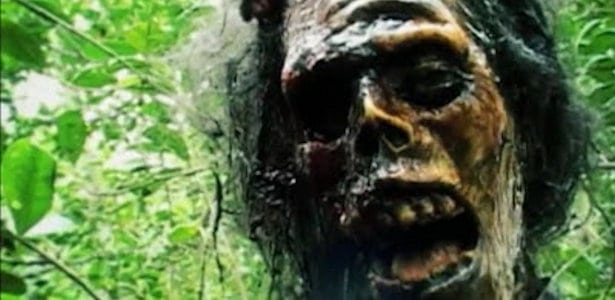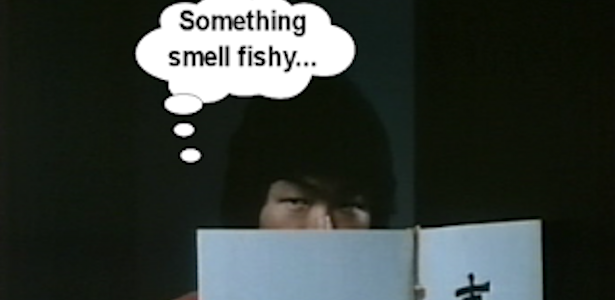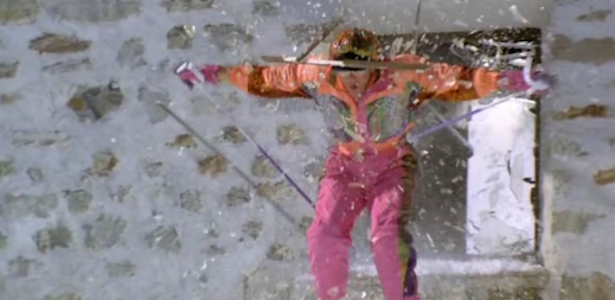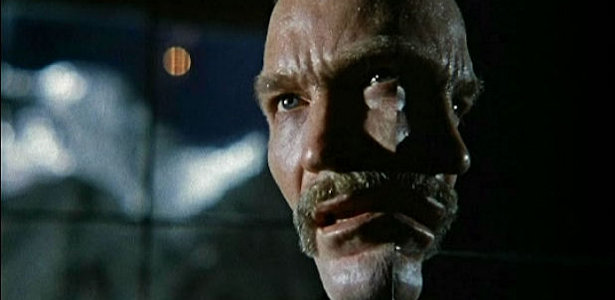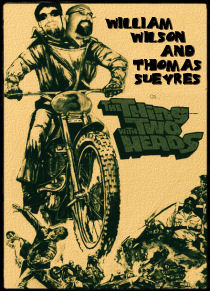In the past 20 years, like so many Italian genre directors Martino has moved (or been moved by circumstance) into the realm of the small screen. A few series, but mostly TV movies. MOZART is his last theatrical feature to date, and while it would never play theaters here in the States, it is a solid little procedural that proves that Martino hasn't lost his touch.
 A group of 20-something music academy students perform their second recital and strike an off chord. This leads to a heated exchange between the students and their tyrannical professor Baraldi (Alberto Di Stasio) who threatens to throw them out right before finals. On the way home one of the female students, Chiara, is attacked and viciously stabbed to death by a black-clad killer who carves a strange symbol on her stomach. Martino deftly uses this opener to set the stage for a police procedural throwback to the giallo era of the '70s. Is Baraldi hiding a secret? Is Danile (Daniela Scarlatti) a psychopath who is barely holding it together? Could it be Chiara's drug-pushing ex-boyfriend Gianni (Emanuele Cerman) out for revenge? Perhaps it is Chiara's childhood friend, Arturo (Manuel Oliverio), whose love was spurned in adulthood. Maybe it was the headmistress of the school who wears a necklace with the same symbol that was carved on Chiara's stomach. Not to mention a whole host of other possibilities.
A group of 20-something music academy students perform their second recital and strike an off chord. This leads to a heated exchange between the students and their tyrannical professor Baraldi (Alberto Di Stasio) who threatens to throw them out right before finals. On the way home one of the female students, Chiara, is attacked and viciously stabbed to death by a black-clad killer who carves a strange symbol on her stomach. Martino deftly uses this opener to set the stage for a police procedural throwback to the giallo era of the '70s. Is Baraldi hiding a secret? Is Danile (Daniela Scarlatti) a psychopath who is barely holding it together? Could it be Chiara's drug-pushing ex-boyfriend Gianni (Emanuele Cerman) out for revenge? Perhaps it is Chiara's childhood friend, Arturo (Manuel Oliverio), whose love was spurned in adulthood. Maybe it was the headmistress of the school who wears a necklace with the same symbol that was carved on Chiara's stomach. Not to mention a whole host of other possibilities. Martino sets up the first half of the film with one murder and sets his detective, Commissioner Maccari (Enzo De Caro), on the trail of the killer, sorting through clues and digging into the victim's past, all while being haunted by the death of his murdered wife. Once knee deep in the surprisingly convoluted plot (and I mean that in a good way), the killer starts picking off suspects one by one, leaving bloody clues behind. Clearly meant to be a throwback to the proper giallos of the past, in addition to a complicated plot, Martino, who also scripted, throws in an absolutely ridiculously far-fetched resolution which, if you are a fan of the genre, is mandatory. Those uninitiated to the trappings of the giallo may find this to be so absurd as to be laughable and it is, but when I sit down to watch a giallo, I expect a few things and one of them is a preposterous, left-field explanation of why the killer is a killer. While there is no way to predict the ending, Martino does leave plenty clues as to the killer's identity carefully placed among the wide swath of red herrings.
Martino sets up the first half of the film with one murder and sets his detective, Commissioner Maccari (Enzo De Caro), on the trail of the killer, sorting through clues and digging into the victim's past, all while being haunted by the death of his murdered wife. Once knee deep in the surprisingly convoluted plot (and I mean that in a good way), the killer starts picking off suspects one by one, leaving bloody clues behind. Clearly meant to be a throwback to the proper giallos of the past, in addition to a complicated plot, Martino, who also scripted, throws in an absolutely ridiculously far-fetched resolution which, if you are a fan of the genre, is mandatory. Those uninitiated to the trappings of the giallo may find this to be so absurd as to be laughable and it is, but when I sit down to watch a giallo, I expect a few things and one of them is a preposterous, left-field explanation of why the killer is a killer. While there is no way to predict the ending, Martino does leave plenty clues as to the killer's identity carefully placed among the wide swath of red herrings.I suppose you could nit-pick MOZART for having too many ideas for it's own good. There are many interesting moments that seem to be quickly forgotten as the plot moves forward. Near the beginning of the movie there is a sequence that shows an experimental music therapy treatment for down's syndrome patients. It's an interesting idea that leads you to believe that maybe the killer was being treated there. I mean, their idea of music is a doctor plunking around on a giant xylophone. That would drive anyone mad. On the other hand, you have so much going on that even if Martino is throwing around balls of tinfoil, it still makes for an engaging movie. Those who have sat through some lesser giallos will attest that some of them could use more ideas, even if they aren't fleshed out.
While the movie is shot on video, it actually looks really close to being cheap filmstock. The only thing that gives it away is the live sound and the massive amount of lighting required to make video look clean, which unfortunately destroys the atmosphere of night photography. In spite of this, Martino gives the movie a very professional look, using quite a bit of nice camerawork via dolly, oblique angles and POV shots. OPERA (1987) it is not, but for what it is, this is a solidly entertaining giallo that may not reach the heights of delirium of Martino's TORSO (1973), but kept my interest from beginning to end.





